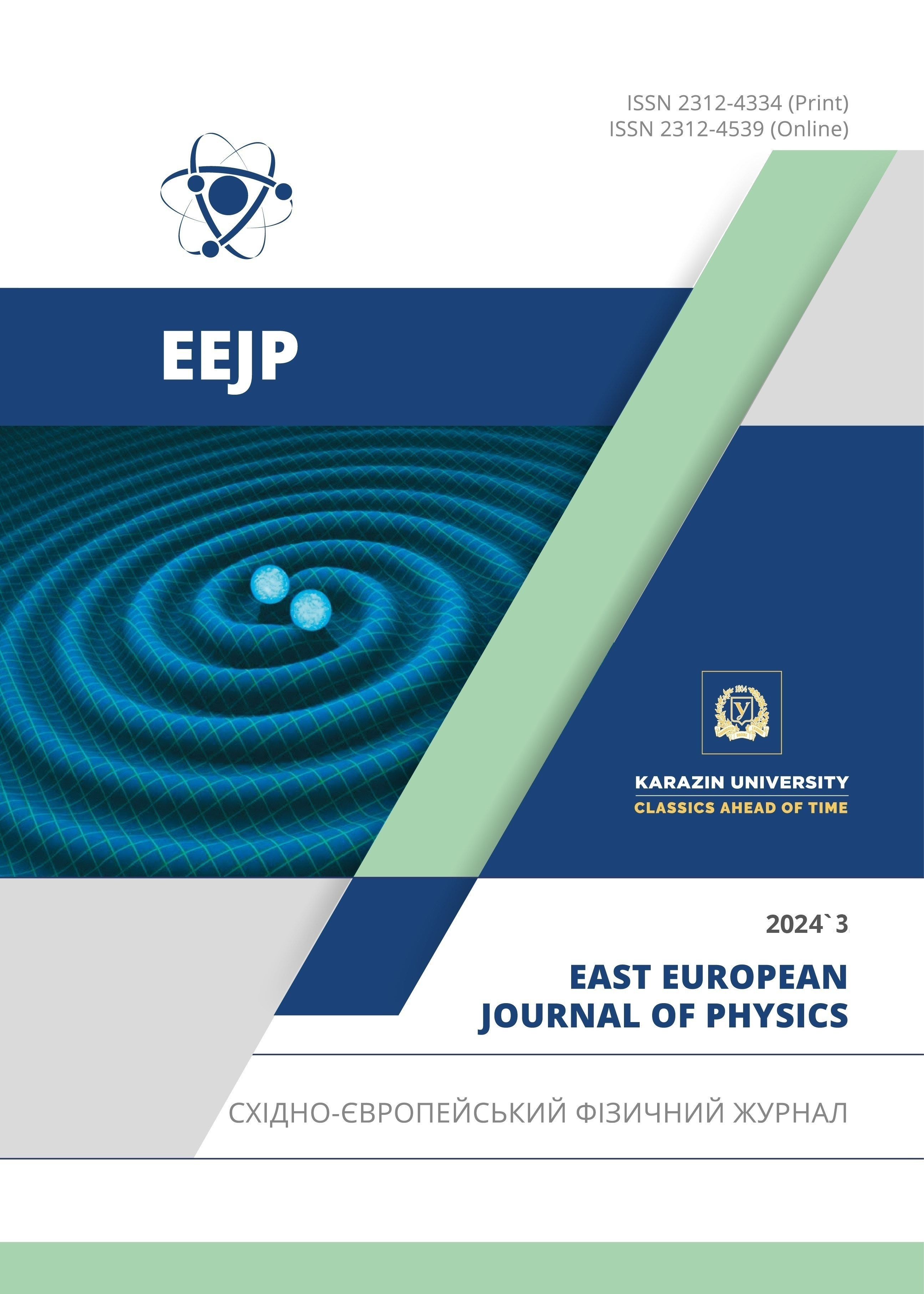Entropy Generation Analysis on Hybrid Dusty Nanofluid Flow Over a Heated Stretching Sheet: Aerospace Technology
Abstract
The past few years have seen enormous investments in research and development of next generation technologies with potential use in aerospace. Engine oil provides grease, air conditioning, maintenance, rust prevention, reduced sound and turbine functioning among its many functions within an airplane engine. Among these, lubrication is paramount. Without lubrication, it goes without saying that any moving components would wear out very fast. The present study investigates the significance of heat transport properties entropy generation on MHD dusty hybrid nanofluid flow over a heated stretching sheet in the presence of heat generation. By using the suitable self-similarity variables, the partial differential equation is transformed into ordinary differential equations. After then, the dimensionless equations are solved by using the MATLAB solver in bvp4c scheme. Graphs and tables are explained how the operational factors affect fluid flow efficiency. The velocity profile enhanced for increasing magnetic field values, however the energy outline exhibited the reverse behavior, which we observed. During the course of our research, we came to the conclusion that mixed nanofluids are superior to dusty small fluids in terms of their ability to transport energy transporters.
Downloads
References
H.A. Nabwey, and A. Mahdy, “Transient flow of micropolar dusty hybrid nanofluid loaded with Fe3O4-Ag nanoparticles through a porous stretching sheet,” Results Phys. 21, (2021). https://doi.org/10.1016/j.rinp.2020.103777
S. Jakeer, and P.B.A. Reddy, “Entropy generation on the variable magnetic field and magnetohydrodynamic stagnation point flow of Eyring–Powell hybrid dusty nanofluid: Solar thermal application,” Proc. Inst. Mech. Eng. Part C, J. Mech. Eng. Sci. 236(13), 7442–7455 (2022). https://doi.org/10.1177/09544062211072457
A. Divya, and P. Bala Anki Reddy, “Aerospace aspects of electromagnetohydrodynamic dusty flow of hybrid nanofluid with entropy generation over a rotating disk,” Proc. Inst. Mech. Eng. Part E, J. Process Mech. Eng. 237(2), 196-206 (2022). https://doi.org/10.1177/09544089221102417
P. Saffman, “On the stability of laminar flow of a dusty gas,” J. fluid mech, 13(1), 120-128 (1962). https://doi.org/10.1017/S0022112062000555
F.E. Marble, “Dynamics of Dusty Gases,” Annu. Rev. Fluid Mech. 2(1), 397–446 (1970). https://doi.org/10.1146/ANNUREV.FL.02.010170.002145
G. Ramasekhar, et al., “Heat transfer exploration for bioconvected tangent hyperbolic nanofluid flow with activation energy and joule heating induced by Riga plate,” Case Stud. Therm. Eng. 55, 104100 (2024). https://doi.org/10.1016/j.csite.2024.104100
G. Ramasekhar, and M. Jawad, “Numerical Heat Transfer , Part A : Applications Characteristics of MWCNT , SWCNT , Cu and water based on magnetized flow of nanofluid with Soret and Dufour effects induced by moving wedge : Consequence of Falkner – Skan power law,” Numer. Heat Transf. Part A, Appl. 1–15, 2024, https://doi.org/10.1080/10407782.2024.2341270
G. Ramasekhar, “Scrutinization of BVP Midrich Method for Heat Transfer Analysis on Various Geometries in the Presence of Porous Medium and Thermal Radiation ,” 13(1), 100–107 (2024). https://doi.org/10.1166/jon.2024.2130
A. Divya, and P.B.A. Reddy, “Electromagnetohydrodynamic unsteady flow with entropy generation and hall current of hybrid nanofluid over a rotating disk: An application in hyperthermia therapeutic aspects,” Proc. Inst. Mech. Eng. Part C, J. Mech. Eng. Sci. 236(13), 7511–7528 (2022). https://doi.org/10.1177/09544062221076294
A.J. Chamkha, A.S. Dogonchi, and D.D. Ganji, “Magneto-hydrodynamic flow and heat transfer of a hybrid nanofluid in a rotating system among two surfaces in the presence of thermal radiation and Joule heating,” AIP Adv. 9(2), 1–14 (2019). https://doi.org/10.1063/1.5086247
S. Shaw, S.S. Samantaray, A. Misra, M.K. Nayak, and O.D. Makinde, “Hydromagnetic flow and thermal interpretations of Cross hybrid nanofluid influenced by linear, nonlinear and quadratic thermal radiations for any Prandtl number,” Int. Commun. Heat Mass Transf. 130, 105816 (2022). https://doi.org/10.1016/j.icheatmasstransfer.2021.105816
S. Jakeer, and S.R.R. Reddy, “Electrokinetic membrane pumping flow of hybrid nanofluid in a vertical microtube with heat source/sink effect,” Eur. Phys. J. Plus, 138(6), 489 (2023). https://doi.org/10.1140/EPJP/S13360-023-04118-7
S. Jakeer and P.B.A. Reddy, “Entropy generation on the variable magnetic fi eld and magnetohydrodynamic stagnation point fl ow of Eyring-Powell hybrid dusty nano fluid : Solar thermal application,” 236(13), 1–14 (2022). https://doi.org/10.1177/09544062211072457
S. Mishra, M. Khan, and B.C. Rout, International Communications in Heat and Mass Transfer, “Dynamics of dust particles in a conducting dusty nanomaterials: A computational approach,” 119, 104967 (2020). https://doi.org/10.1016/j.icheatmasstransfer.2020.104967
M. Reddy, M. Rani, et al., “Hybrid dusty fluid flow through a Cattaneo–Christov heat flux model,” Physica A: Statistical Mechanics and its Applications, 551, 123975 (2020). https://doi.org/10.1016/j.physa.2019.123975
S.K. Parida, et al., “Dynamics of dust particles in a conducting water-based kerosene nanomaterials: A computational approach,” Int. J. Chem. React. Eng. 19(8), 787–797 (2021). https://doi.org/10.1515/ijcre-2020-0204
M.A. Qureshi, “A case study of MHD driven Prandtl-Eyring hybrid nanofluid flow over a stretching sheet with thermal jump conditions,” Case Stud. Therm. Eng. 28, 101581 (2021). https://doi.org/10.1016/J.CSITE.2021.101581
G. Ramasekhar, and P. Bala Anki Reddy, “Entropy generation on Darcy–Forchheimer flow of Copper-Aluminium oxide/Water hybrid nanofluid over a rotating disk: Semi-analytical and numerical approaches,” Sci. Iran. 30(6), 2245–2259 (2023). https://doi.org/10.24200/sci.2023.60134.6617
A. Almaneea, “Numerical study on heat and mass transport enhancement in MHD Williamson fluid via hybrid nanoparticles,” Alexandria Eng. J. (2022). https://doi.org/10.1016/j.aej.2022.01.041
Authors who publish with this journal agree to the following terms:
- Authors retain copyright and grant the journal right of first publication with the work simultaneously licensed under a Creative Commons Attribution License that allows others to share the work with an acknowledgment of the work's authorship and initial publication in this journal.
- Authors are able to enter into separate, additional contractual arrangements for the non-exclusive distribution of the journal's published version of the work (e.g., post it to an institutional repository or publish it in a book), with an acknowledgment of its initial publication in this journal.
- Authors are permitted and encouraged to post their work online (e.g., in institutional repositories or on their website) prior to and during the submission process, as it can lead to productive exchanges, as well as earlier and greater citation of published work (See The Effect of Open Access).








